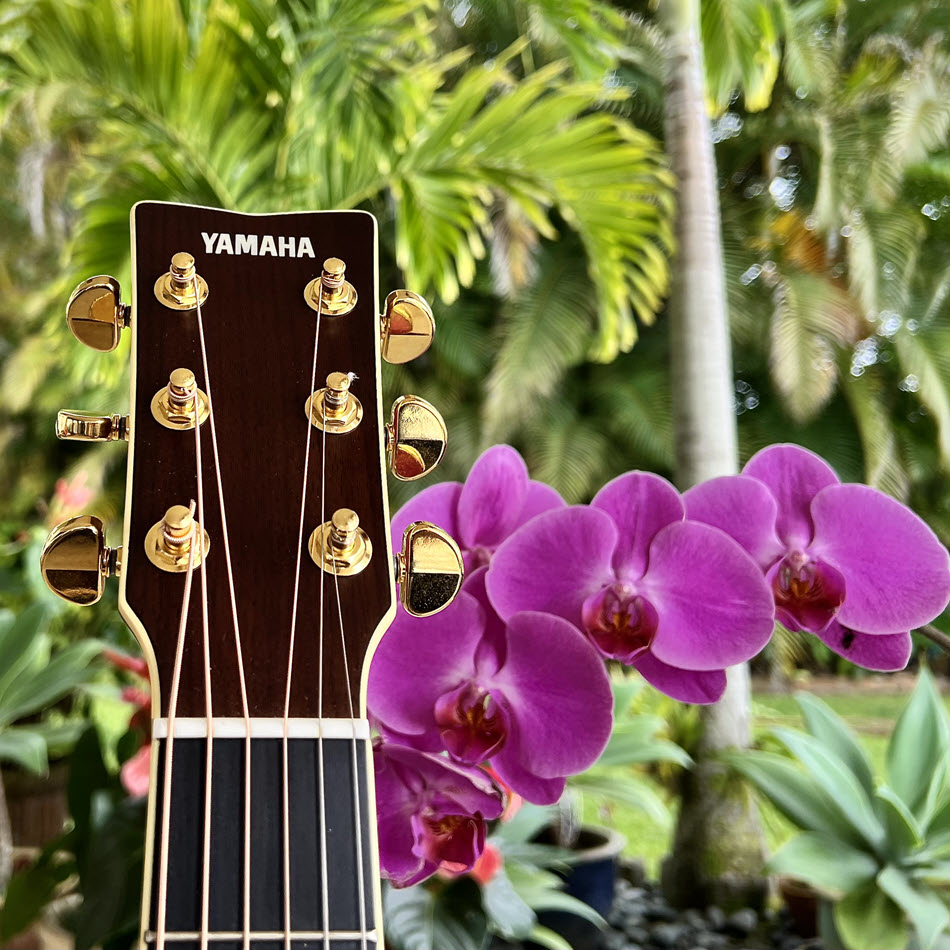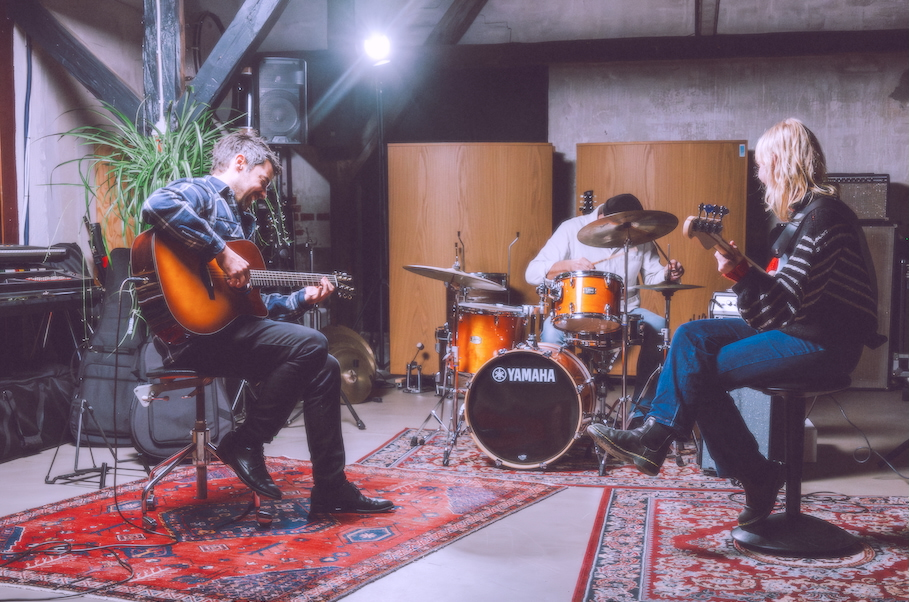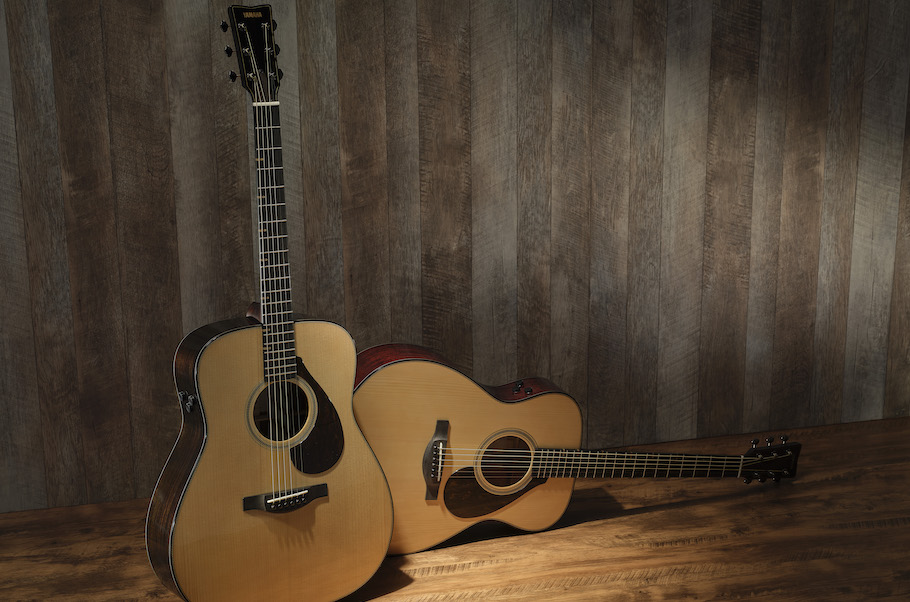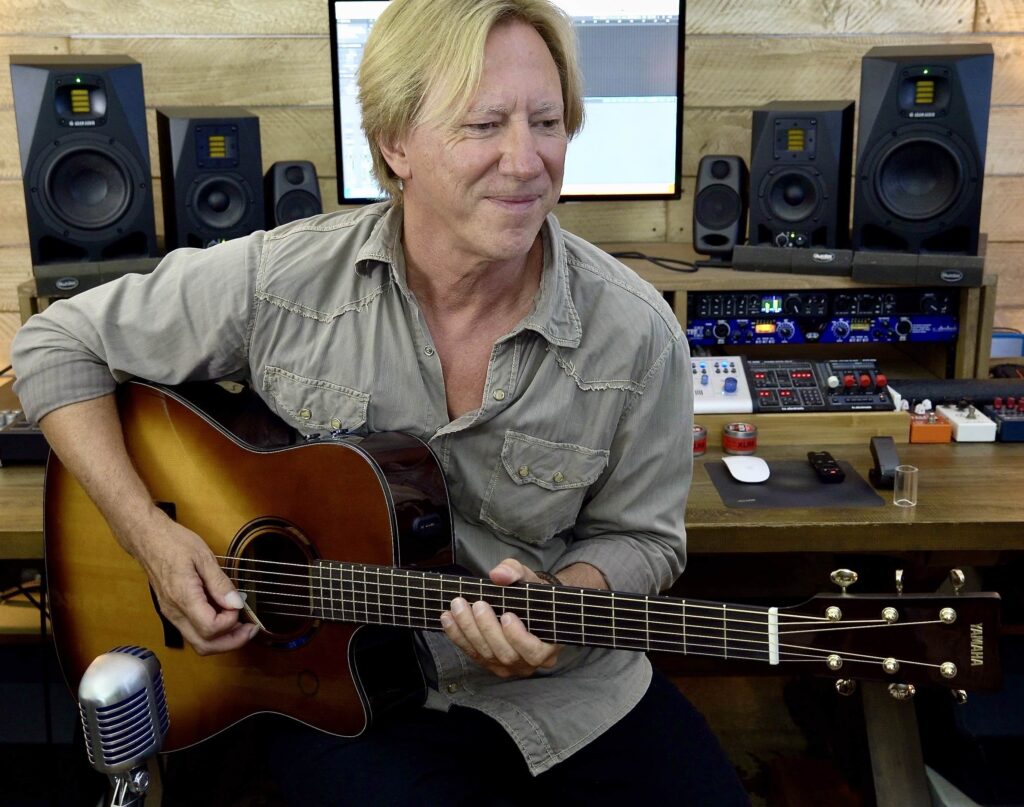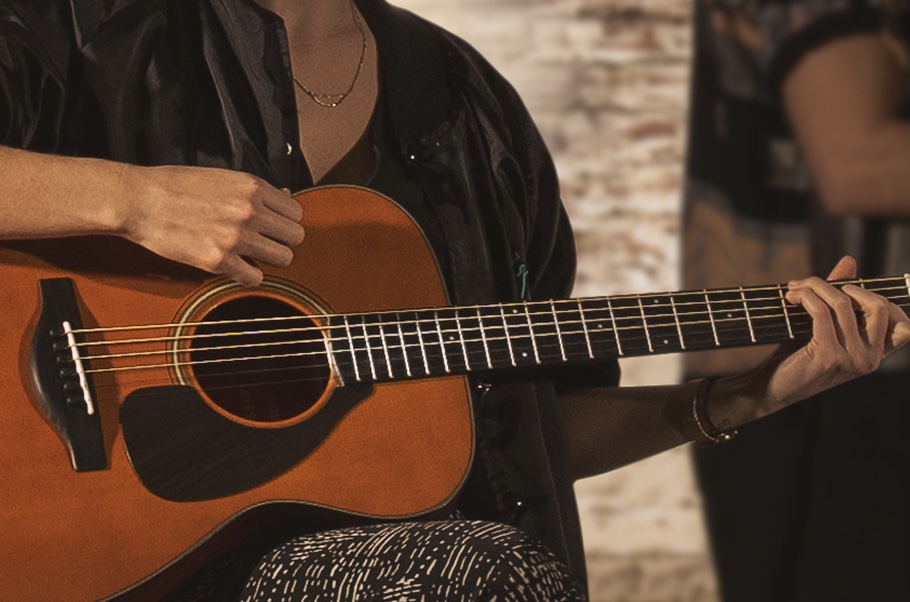What are the Different Acoustic Guitar Body Types?
From junior to jumbo and all sizes in-between.
I’ve always been an advocate of choosing a guitar that is the right size for your physical frame, hand size and intended application. If you’re a singer/songwriter, it’s also important to find an acoustic guitar that doesn’t overpower your vocals.
In this posting, I’ll take a look at the various acoustic guitar body types and sizes, and discuss the differences in sound and practical applications for each. To simplify the nomenclature, let’s break it down into four main categories: small, medium, large and extra-large.
Small Body Types: Travel, Junior, Parlor, Classical and Flamenco
Travel / Junior
The smallest acoustic guitars are travel and junior guitars. These instruments are perfect for the young beginner who’s learning to navigate the fretboard for the first time. Their short scale length (the string distance between the nut and bridge) allows for lower string tensions, while their compact size allows the guitar to sit closer to the player’s body, and for the picking hand to easily transverse the body bout (the curved areas at the top and bottom ends of the instrument).
These are also a great option for semi-pro and professional players who want a guitar to travel with on airplanes or a tour bus. These instruments often have a reduced bass response due to their compact size, but they generally project well for fun practice sessions.
Yamaha guitars in this category include the 3/4 size JR2, APXT2 and APXT2EW models.

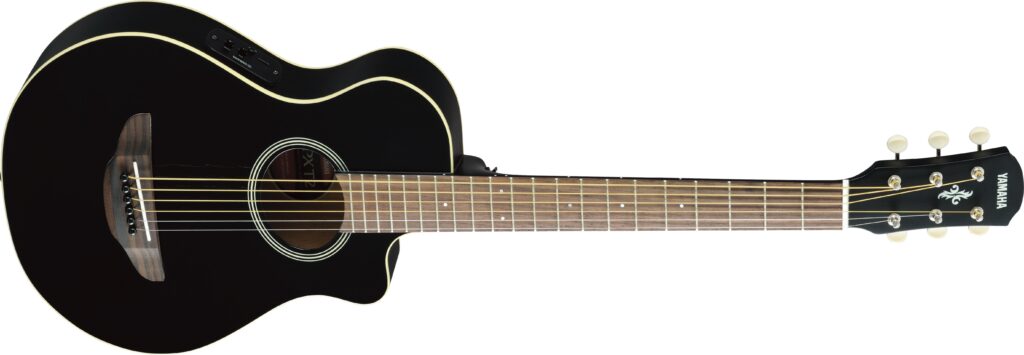
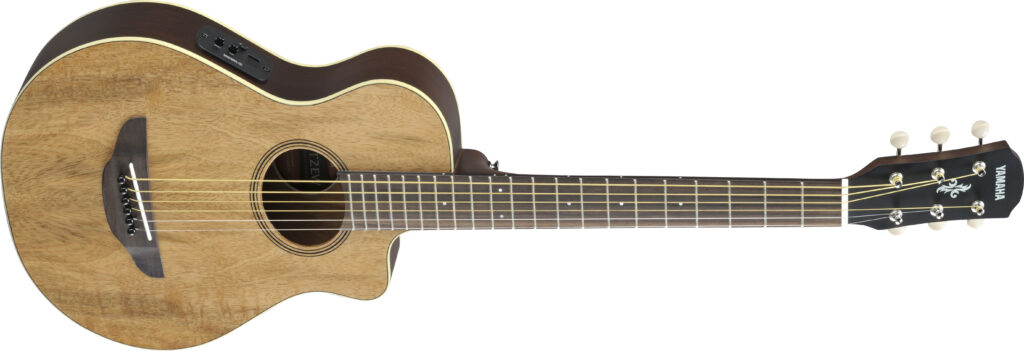
Parlor
Parlor guitars provide a great blend of portability, playability and tonal excellence. Again, their shorter scale length (in this case, 23-5/8″) allows for lower string tension, making them ideal for beginners, and the smaller body size works well for fingerstyles and acoustic blues.
These guitars will project well when strummed too, but I’d recommend taking a gentler approach to retain the clarity the body shape provides. Their reduced bass and accentuated treble response allows them to stand out well in a mix when recording multiple guitars, making them perfect for studio musicians.
Yamaha parlor guitars include the CSF1M and CSF-TA models. The latter even has built-in reverb and chorus effects due to its use of TransAcoustic technology.
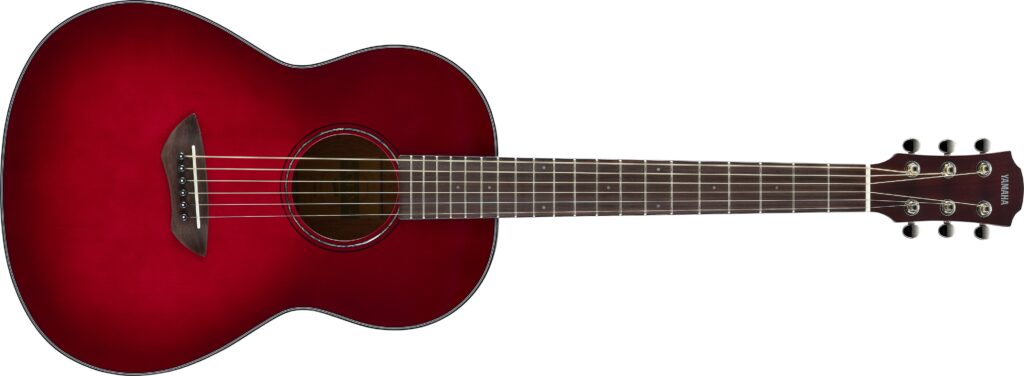
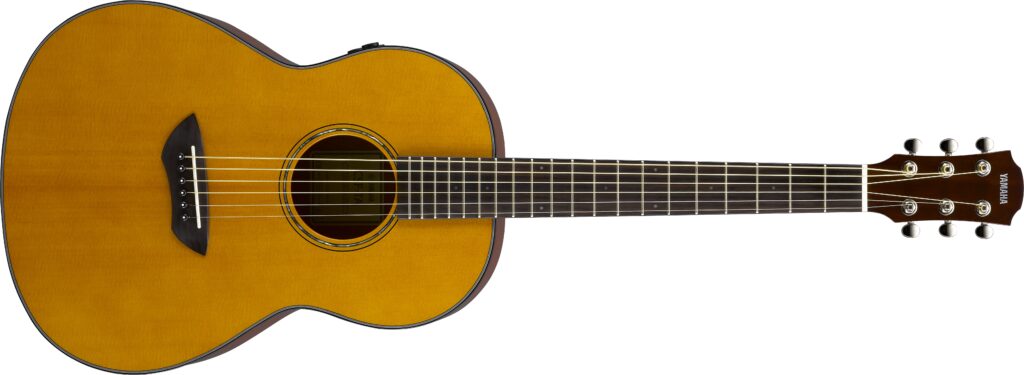
Classical/Flamenco (Nylon-String)
These nylon-string guitars come in several distinct sizes. There are three types of “school” classical guitars: 1/2 scale (smallest), 3/4 scale and 4/4 scale (full size). They enable students of all ages to take up guitar, then graduate to the next body size as they grow in stature and performance levels … all while retaining the same familiarity to the instrument.
The body size in standard classical and flamenco nylon-string models remains constant, but their tonewoods will vary between solid cedar and solid spruce tops, and mahogany versus rosewood back and sides. Rosewood and cedar provide rich, warm tones with lots of bass, while the mahogany and spruce variations enhance the treble, and at the same time add clarity to the low end.
Yamaha classical guitars include CG/CGX Series instruments and the CG-TA TransAcoustic model.
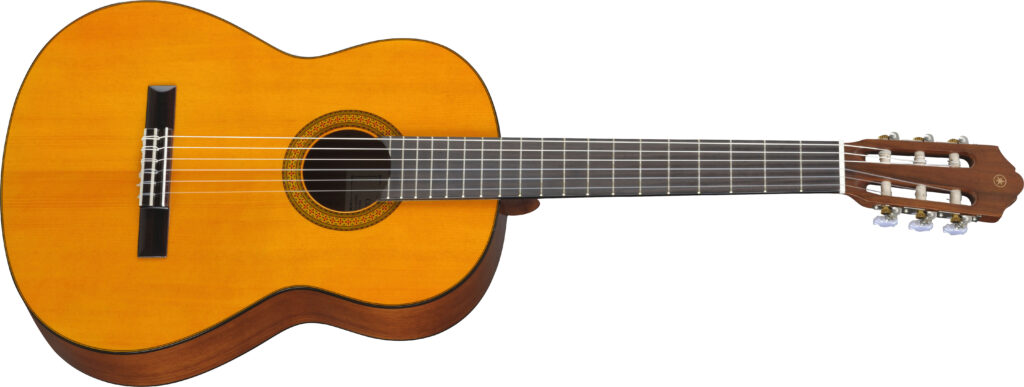
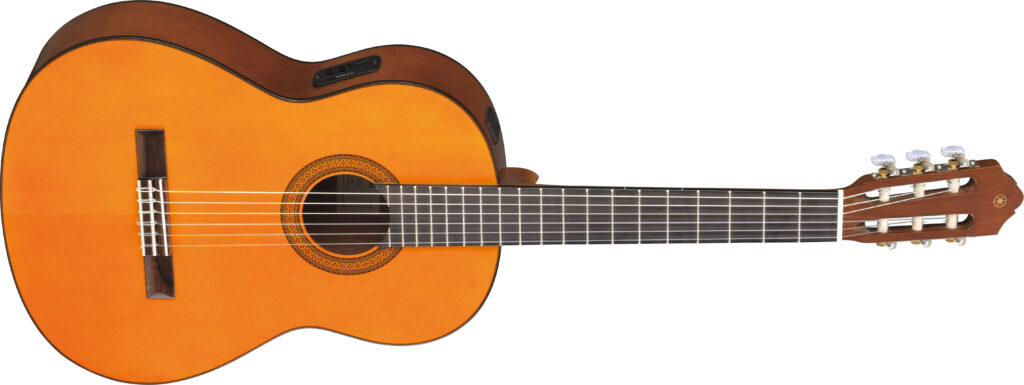

Medium Body Types: Concert and Grand Auditorium
Medium-size steel-string guitars include those with concert and “grand auditorium” bodies. Both have wider shoulders and a lower body bout than those instruments in the small guitar category.
In my opinion, these are the best guitars for those who want to be able to articulate fingerstyle and chordal strumming on the same instrument. Tonally, they are very balanced across the low, mid and high frequencies, and their manageable size and shape works well for players of any age. Some medium-body guitars are also available with a cutaway, which allows for further access to the upper frets. These cutaway options don’t reduce the size of the guitar in the lower body bout or instrument depth, but due to the diminished sound chamber, may speak softer in terms of volume and bass response.
Yamaha concert-body guitars include STORIA, AC Series and APX Series instruments, as well as the URBAN Guitar by Yamaha (designed by country music star Keith Urban). These instruments also feature a shorter scale length for lower string tensions. Couple that with a narrower body depth than most other medium-body guitars, and you have a comfortable instrument for just about any style of music.
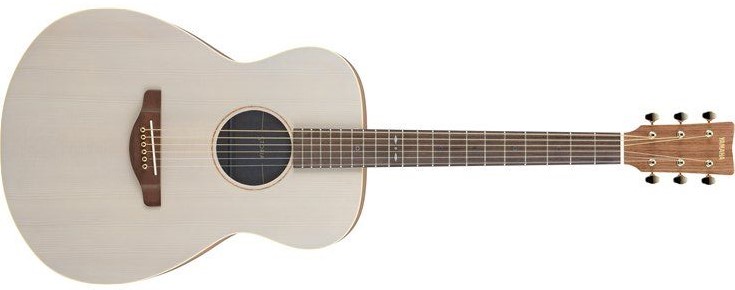
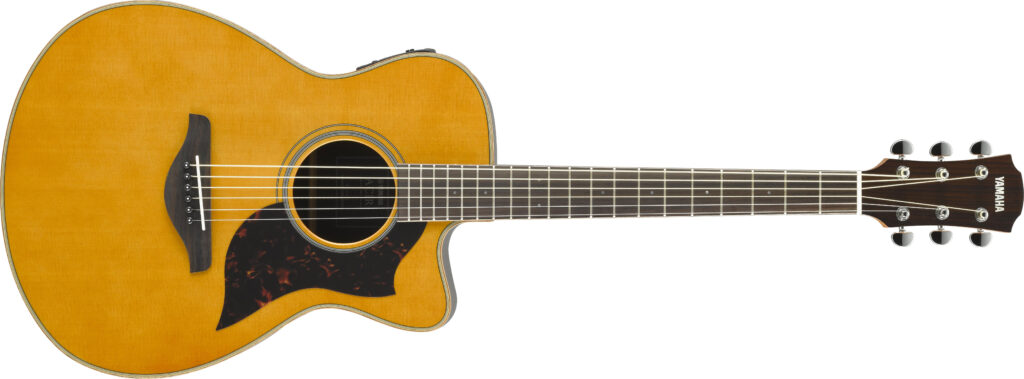
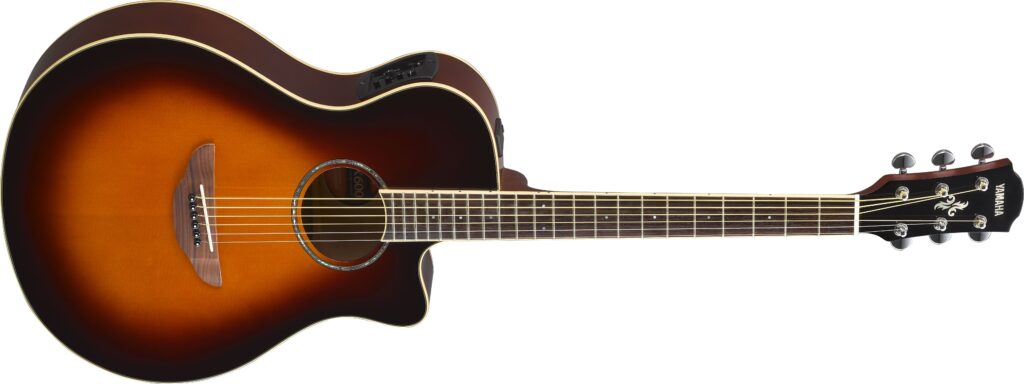
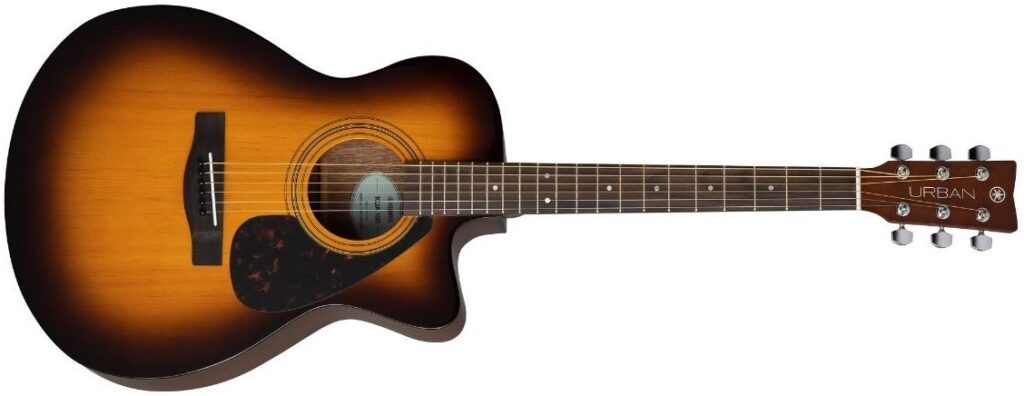
Other Yamaha steel-string models with medium-size bodies include the FSX3 Red Label and LS-TA TransAcoustic guitars.
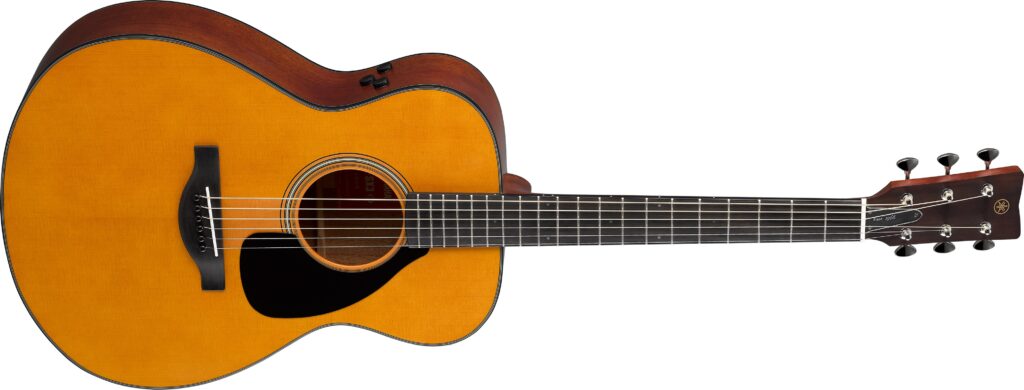
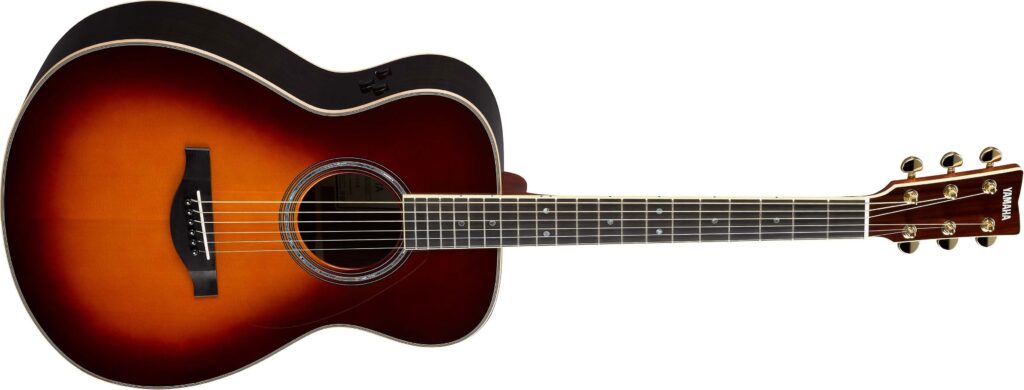
Some nylon-string guitars may also fall into this mid-size category — in particular, instruments that come fully equipped with preamp and pickup systems like Yamaha NCX and NTX Series instruments. These guitars will appeal to both accomplished nylon-string players and electric and steel-string players looking for the tonal beauty of a classical-style instrument. Both models have cutaways, but the NCX is wider in the upper shoulders than its smaller sibling, the NTX.
NTX Series guitars also feature a slimmer non-traditional neck profile and nut width, with an oval sound hole and thin line body depth that provides a more contemporary sound and overall feel. NCX guitars feature a traditional neck and body depth, with a circular sound hole. The fuller body depth results in more richness in the low end than the narrower NTX model.

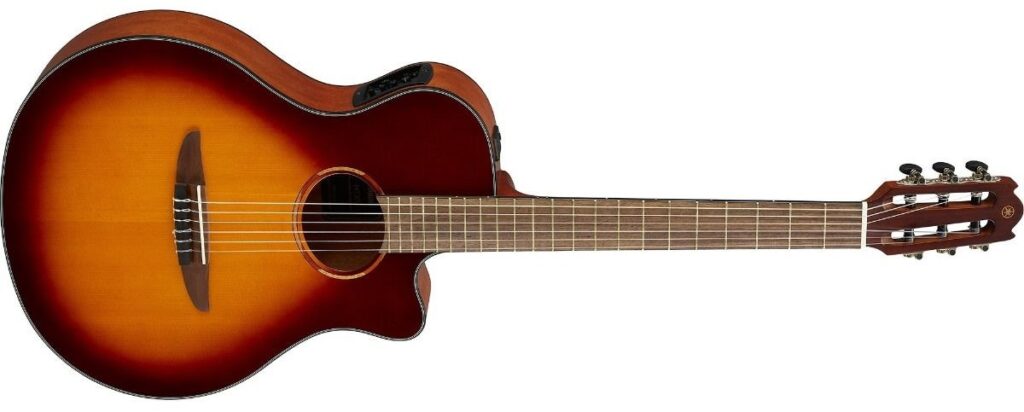
Large Body Types: Dreadnought and Western
Dreadnought guitars, which are full in both the upper and lower bouts of the body, are always steel-string. Singer-songwriters and bluegrass musicians in particular favor these bold instruments for their powerful, articulate sound, where projection within the context of an acoustic combo is paramount. Yamaha flagship FG9 and FG-TA TransAcoustic guitars are the perfect representation of this type of instrument.
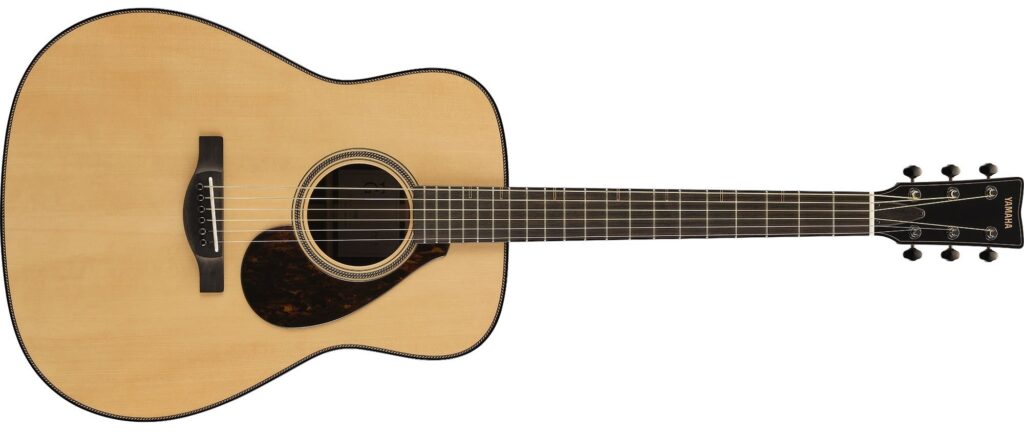
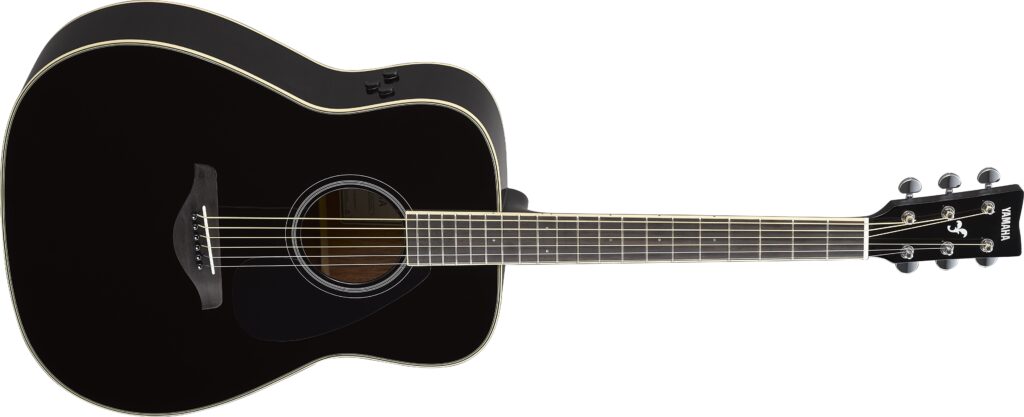
Western body-style guitars (again, always steel-string) are very similar to dreadnoughts and sometimes have a cutaway for easy access to the upper region of the fretboard. Yamaha guitars with Western bodies include the LL-TA and FGC-TA TransAcoustic models; the latter has a cutaway.
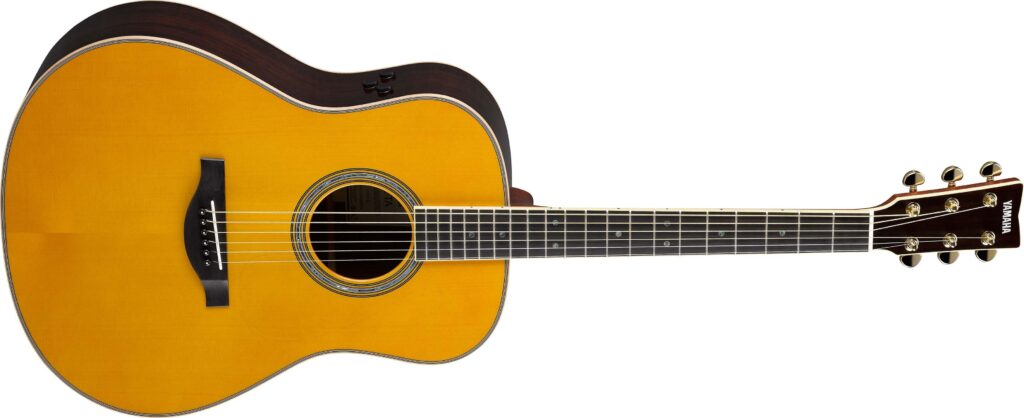
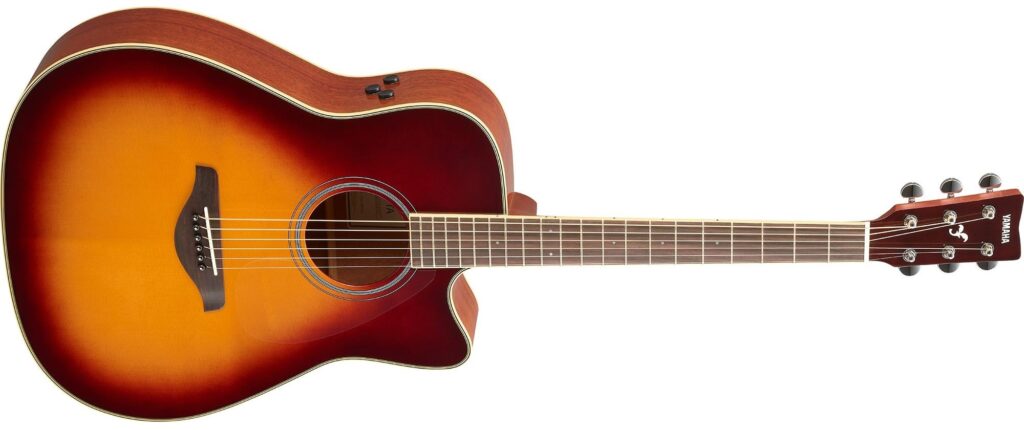
Extra-Large Body Type: Jumbo
The largest of acoustic guitar types are called jumbo guitars. Projection, low-end response and fat, warm tones emanate from these performance workhorses, which you can think of as being the Clydesdales of guitars.
It’s quite common to see female country singers playing jumbos. Their low-end response and midrange warmth offers a nice balance to the vocal frequencies. Guitar instrumentalists also like performing with jumbos due to the fullness of the sound they offer. When it’s the only instrument onstage, you need all the bandwidth you can get!
Some jumbo guitars (such as Yamaha CPX Series instruments) also have a cutaway body for easy access to the higher frets.
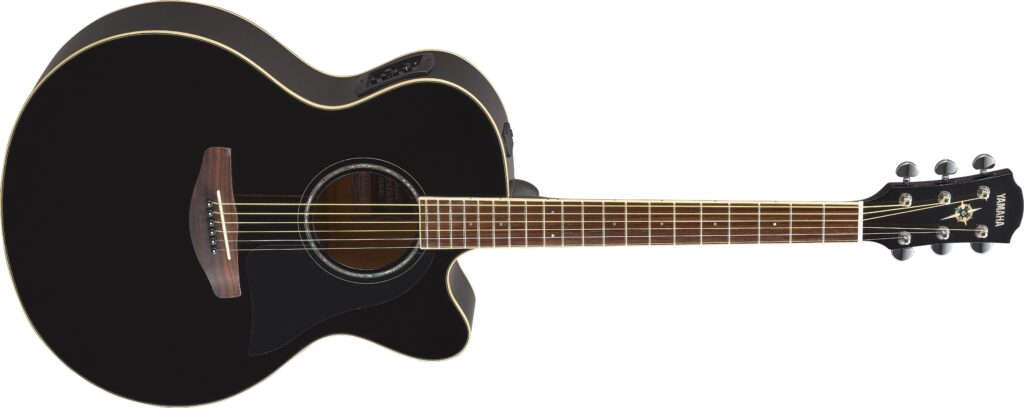
The Videos
Here are a series of videos that demonstrate various small, medium and large body size Yamaha guitars, including both steel-string and nylon-string instruments.
Small Steel-String (Parlor Body): CSF3M
Small Nylon-String (Classical Body): CG-TA
Medium Steel-String (Concert Body): AC5R
Medium Nylon-String (Cutaway Body): NTX5
Large Steel-String (Dreadnought Body): FG9
Large Steel-String (Western Body): LL-TA
The Wrap-Up
The body type, style, scale length and general proportions of a guitar all contribute to the tone, playability and functionality of the instrument. These factors should all play a major role in the decision-making when it comes to finding the perfect guitar for you, your hands, and ultimately your musical progression.
Here’s a graphic that shows the various body sizes employed by Yamaha acoustic guitars:

Choose the right one and both your playing ability and your enjoyment of the instrument will undoubtedly be enhanced!










